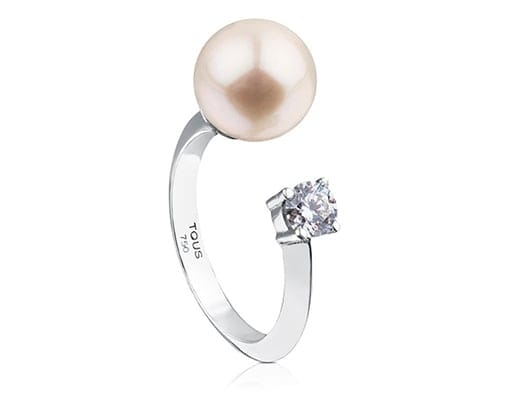What are you looking for?
Search
PEARLS
Pearls are gemstones of organic, origin. We differentiate between natural and cultivated pearls based on whether man has been involved or not.
The typical pearly luster is produced by the overlapping platelets of aragonite and film of conchiolin nearer of the pearl surface. This formation also causes the interference of light and the resulting iridescent colors, called orient that can be observed in the pearls surface.Known for men since roman times, due that pearls do not need to be polished or cut to show it´s beauty.
Natural Pearls are made by a mollusk as a defensive action resulting from the intrusion of a foreign body. They are opaque and can come in a myriad of shapes and colors. They are made of a fragile material as their structure is made of organic material and water. For this reason, we recommend that they do not come into contact with dryness, perfumes, sweat or other pearls. They should also be worn only on occasion and should be aired well.
1. Australian or south sea pearls
They generally range in size between 10 and 20 millimeters of diameter and are produced in the largest mollusk, the Pinctada Máxima. The cultivation period is nearly 3 years.
ORIGIN
Northern Australia, area around the Philippines, Indonesia.
Show more Show less
2. Mabe pearl
Cultivated semi-spherical pearls that grow attached to the inside of an oyster shell, instead of inside its body. They are produced in sizes that range from 10 to 17 mm in diameter.
Show more Show less
1. Cultivated fresh water pearls
Pearls cultivated in pearl farms, which can be found in rivers, bays and lakes all over the world. They are easily cultivated in freshwater molluscs, though as salt water cultivated pearls.
Show more Show less
1. Round
Cultured freshwater pearls without an artificial core inside; they are symmetrical and roll in a straight line. This is generally the most highly prized type of pearl. At TOUS, the most frequently used sizes are between 4 and 9 mm.
2. Half-round
A cultured freshwater pearl without an artificial core inside. They have a rounded shape but do not achieve a completely spherical shape. The sizes are similar to those of the round pearl.
3. Button
A cultured freshwater pearl without an artificial core inside, symmetrical but flattened in a particular area. At TOUS, they are commonly used for bracelets and necklaces. There is a wide selection of sizes ranging between 4 to 10 mm.
2. Coin
A cultured freshwater pearl with an artificial core inside. The flat shape is due to shape of the artificial core itself that is inserted into the mollusk. The average size is usually 10-12 mm, but we have collections at TOUS where they can reach 16-17 mm. Irregularities in the shape or surface are possible.
5. Stick
A cultured freshwater pearl without an artificial core inside. Its characteristic elongated shape is achieved by the shape of the fabric that is inserted to stimulate the mollusk’s secretion of nacre. The cultivation time is between 1 and 2 years. The sizes vary: between 12-22 mm.
6. Rice grain
A cultured freshwater pearl without an artificial core inside. Its size of only a few millimeters and its elongated, irregular shape are reminiscent of a grain of rice, hence its name.
7. Baroque
A cultured freshwater pearl with or without an artificial core inside. Its irregular, asymmetric shape is dependent upon a variety of factors, such as climate or the quality of the water where the mollusk lives. The cultivation time is 2 years.
SYMBOLOGY
INNOCENCE: Due to their delicate nature, pearls have traditionally been associated with purity and innocence. They are often worn as charms for protection against evil and for good luck.

Due to their delicate nature, pearls have traditionally been associated with purity and innocence.

